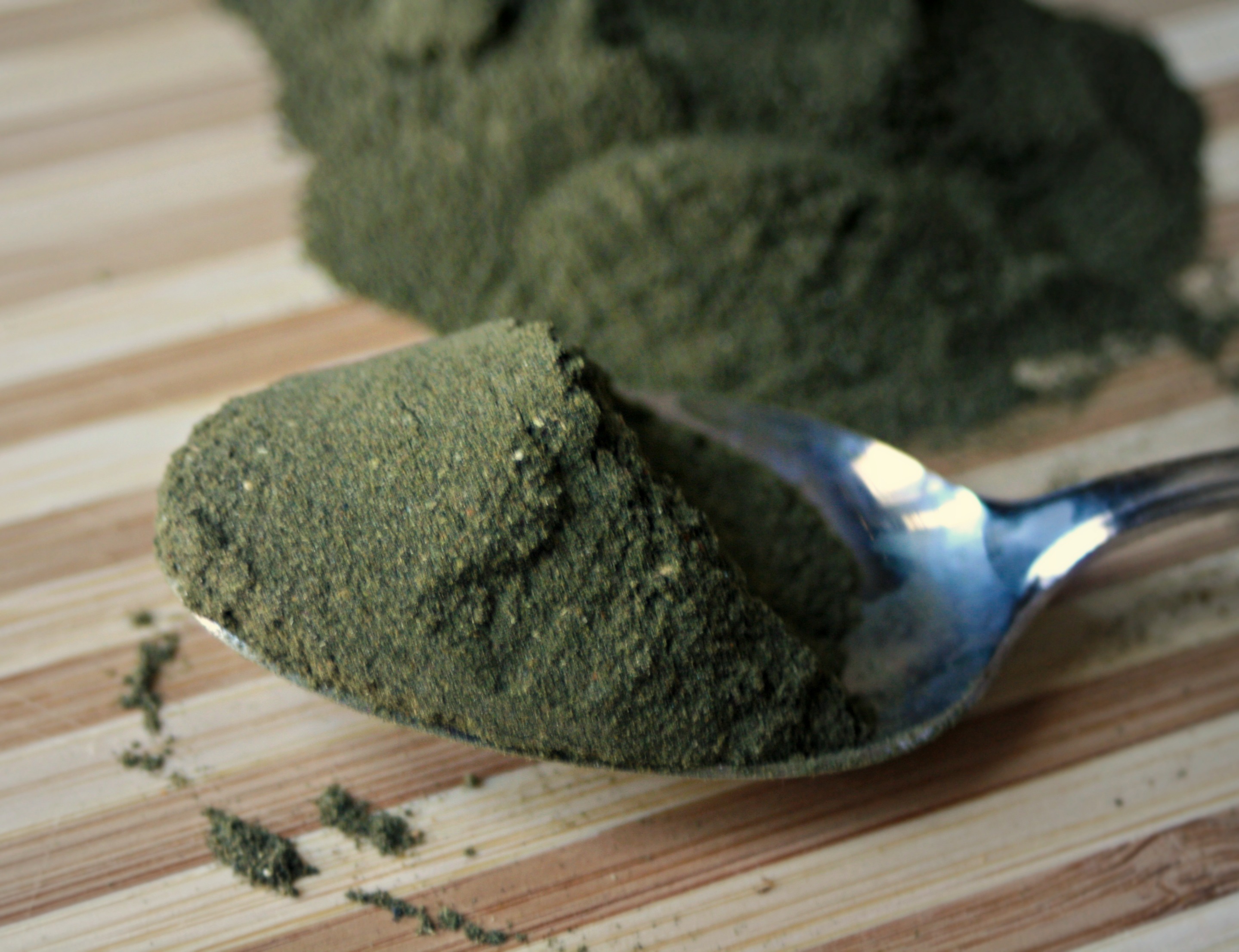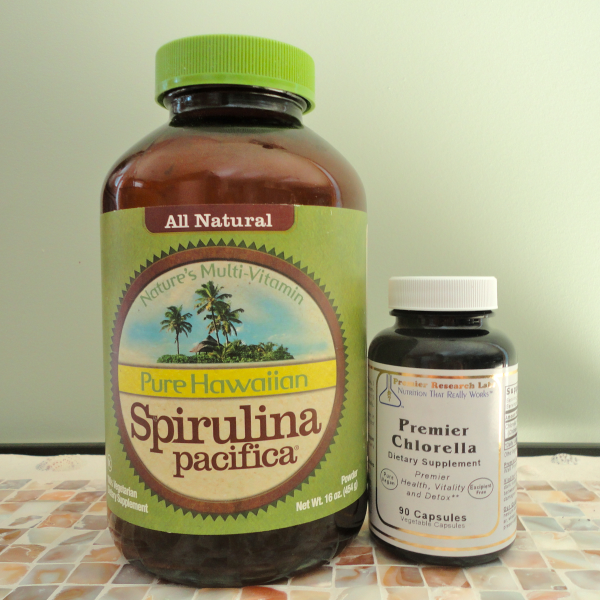In the United States, we tend to think of algae as something that we peer at through microscopes during 4th grade cellular biology lessons or as the morphing clouds of green goop that creepily touch our toes when we take a dip in the lake. While often dismissed as an unimportant nuisance, algae are in fact a fascinating group of microorganisms, which use the simple components of sunlight, carbon dioxide and mineral water to robustly sustain life and reproduce at incredible rates. They are in essence, nutritionally complete microcosms of the energy systems that support us all- a blueprint for life as we understand it to be. In many cultures around the globe, different types of algae are revered as sacred superfoods, enjoyed as a spread over tortillas or dried and served with grains and vegetables. Yet with their somewhat elaborate, scientific-sounding names and vibrant green coloring, these algae superfoods can be alienating and confusing to American consumers. With so many algae products available on the market today, which do you choose? Let’s take a look at two of the most heavily researched products on the market today chlorella and spirulina, so that next time you find yourself dizzily clicking through pages of research on green supplements, you have some context to go by.
Chlorella
Chlorella is a genus of single cell freshwater green algae comprised of organisms that have survived as a life form for billions of years. These single celled microscopic organisms are composed primarily of chlorophyll pigments. With the capacity to reproduce at a rapid rate of 4 times in just 12 hours, chlorella is an an incredibly sustainable food source offering many important nutrients coupled with a high value of complete protein. Because the cell wall of chlorella is indigestible to humans, it is mechanically “broken” through soundwave exposure, gentle milling or pulverizing in preparation for optimal nutrient bioavailability in humans. Encompassed in this fibrous outer shell is a bounty of unique and potent nutrients, offering a wealth of health benefits:
- Cleansing Chlorophyll- Composing nearly 7% of the biomass of chlorella, the pigment chlorophyll is a powerful cleansing agent for the body. As a heavily researched component of this algae, it aids in the processing of oxygen, helps to prime the key elimination system of the body and promotes the growth and repair of your tissues.
- Powerful Heavy Metal and Pesticide Detoxification- Chlorella is a powerful detoxification aid, strongly binding to heavy metals such as cadmium, uranium, mercury and even radioactive materials to usher their prompt removal. Studies have indicated that it has the unique potential to remove toxins while simultaneously strengthening the immune system response to subsequent exposures. Supplemental chlorella has been used therapeutically in mining populations and areas where there are high levels of air pollution and no pure drinking water.
- Ultra-Rich in Nucleic Aids- Chlorella is extremely rich in nucleic acids, key factors for RNA and DNA that protect cells and raise energy levels.
- Bountiful in Beta Carotene- This influential carotenoid acts as a powerful antioxidant to reduce the harmful effects of free radicals and minimize the damage generated from oxidative stress. As a fat soluble provitamin, it also helps with the functioning of the reproductive system, as well as to promote eye and skin health.
- Improves Bowel Function- Chlorella stimulates the growth of friendly aerobic bacteria which has a profound, beneficial effect on overall bowel health. Furthermore, chlorella's cell walls act to absorb toxic compounds within the intestines, restoring proper gastrointestinal pH and helping to promote normal peristalsis.
Spirulina
Spirulina is a close cousin of Chlorella and related to other robust sea vegetables including kelp, dulse, nori, arame and wakame. Spirulina however, is a unique blue-green algae, meaning it is not a true algae in biological terms but rather a cyanobacteria. This distinctive classification is given because its genetic material is not organized in a membrane-bound nucleus, yet it still uses the sun as a source of energy the way that plants do. Grown natively in the alkaline freshwater lakes of Mexico and continental Africa, it has become a popular superfood worldwide, with the highest rates of consumption and production now in Japan.
- Easily Digested- Because the cell wall of spirulina is composed of mucopolysaccharides instead of indigestible cellulose, it is easily broken down by the human digestive system. Nutrients are thus highly bioavailable and become quickly assimilated into the biochemistry of the body.
- Rich in Complete Protein and B12- Slightly higher in content than chlorella (which contains about 50% protein), Spirulina is 70% full protein by biomass. Often used as a supplement for those who consume poor quality or limited amounts of meat in their diet, Spirulina is also one of the few plant sources of essential vitamin B12. Because of it’s highly digestible composition, the hardy protein found in this algae is high in net protein utilization and efficiency ratio, allowing all of the amino acids to be readily utilized without cooking.
- High in Fatty Gamma Linolenic Acid (GLA)- Few foods contain this substance, an omega-6 fatty acid that plays a crucial role in brain function, reproductive health, growth and development, skin and hair growth, bone health, and metabolism regulation. While most commonly consumed in the form of linoleic acid and then converted into GLA within the body, spirulina contains the full form of this fatty acid allowing for efficient absorption and potent effect.
- Unique Phytochemical Phycocyanin- This outstanding phytochemical is the pigment which gives spirulina it’s blue hue. It is unique to spirulina and studies have found it to be useful to brain function, heart health, immune system strengthening, and in supporting bone marrow function for building blood cells. In mammals phycocyanin is converted into phycocyanorubin, an antioxidant that is helpful in protecting the tissues from free radicals.
Which Algae Wins?
As you can see, the above superfoods share many similar characteristics, while also bolstering a distinctive set of precious health benefits. The truth is that spirulina and chlorella have altogether different nutrient profiles and many practitioners recommend that they be taken in tandem to achieve an ultimate supportive balance. This can be achieved by single sources or greens blends. However, because these algae supplement benefits have become popularized in a money-focused consumer economy, it is also important to verify that products are harvested from a pure source, and not mass-produced in contaminated waters. Our carefully researched and scrupulously selected algae products include Alga Spirulina and Chlorella, as well as blends such as Premier Greens and Super Greens and Dunaliella. Here you will also find Astaxanthin and Krill+12 supplements, which include powerful antioxidants derived from algae and phytoplankton. Cultivated by natural processes and nutrient dense in composition, these products are free of additives and preservatives. By taking the initiative to incorporate such beautifully simple, pure and robust foods into our diets, we also take the responsibility for health into our own hands, unlocking our potential for long term wellness and happiness!
Resources
Find this post on The Healthy Home Economist's Monday Mania
See our other posts on Alga Spirulina and Chlorella


